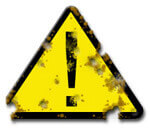Tips for Safe Usage of Neodymium Magnets.
Neodymium magnets surpass other types of magnets in terms of strength
Neodymium magnets are incredibly strong magnets that can be dangerous in specific circumstances. It is important to remember that neodymium magnets are extremely powerful and can attract other metal objects, which can lead to harm or destruction to the body.
If you need to work with neodymium magnets, it is important to exercise caution and follow appropriate safety measures, such as wearing appropriate protective equipment (e.g., safety goggles), avoiding working with magnets near computers or other electronic devices, and keeping magnets apart from each other to prevent them from attracting and potentially causing harm or projectiles to be ejected in the event of impact, which can endanger your vision.
Neodymium magnets are also very hard and fragile, so it is advisable to avoid strikes, throwing, or dropping magnets as they can quickly crack or split.
In conclusion, neodymium magnets are extremely strong tools that can be hazardous if not used with proper care, so it is important to observe security precautions when using them.

To separate magnets, you need to grasp the top magnet and slide it out of the stack, then pull it apart swiftly.
If you work with magnets, you should wear safety glasses and protective gloves (when needed).
You cannot drill or heat neodymium magnets.
Magnets retain their magnetic properties for many years when properly handled and stored at room temperature.
When holding magnets in your hands, you should remember to keep your hands at a proper distance from each other.
Work on a metal table or alternatively on a surface such that the magnets stay there, where you set them and not "fly" together to others.
Remember to keep your magnets at least 20 cm away from sensitive electrical devices and storage media.
If you injure yourself and experience significant injury, seek immediate medical help.
Quickly apply ice to any pinched skin to reduce discomfort. In the case of contact with larger magnets, significant swelling can occur.
Children should under no circumstances use neodymium magnets for entertainment purposes.
Precautions
Neodymium magnets are the strongest magnets ever created, and their strength can surprise you.
On our website, you can find information on how to use neodymium magnets. This will help you avoid injuries and prevent damage to the magnets.
Neodymium magnets can attract to each other due to their immense internal force, causing the skin and other body parts to get pinched and resulting in significant swellings.
If the joining of neodymium magnets is not controlled, then they may crumble and crack. You can't approach them to each other. At a distance less than 10 cm you should have them extremely firmly.
Magnets made of neodymium are noted for their fragility, which can cause them to crumble.
In the event of a collision between two neodymium magnets, it can result in them getting chipped. Despite being made of metal and coated with a shiny nickel plating, they are not as hard as steel. At the moment of connection between the magnets, small sharp metal fragments can be propelled in various directions at high speed. Eye protection is recommended.
Keep neodymium magnets away from GPS and smartphones.
Neodymium magnets are a source of intense magnetic fields that cause interference with magnetometers and compasses used in navigation, as well as internal compasses of smartphones and GPS devices.
Neodymium magnets can demagnetize at high temperatures.
Under specific conditions, Neodymium magnets can lose their magnetism when subjected to high temperatures.
Neodymium magnets are not recommended for people with pacemakers.
In the case of neodymium magnets, there is a strong magnetic field. As a result, it interferes with the operation of a heart pacemaker. Even if the magnetic field does not affect the device, it can damage its components or deactivate the entire device.
Dust and powder from neodymium magnets are flammable.
Avoid drilling or mechanical processing of neodymium magnets. If the magnet is crushed into fine powder or dust, it becomes highly flammable.
Neodymium magnets should not be in the vicinity children.
Not all neodymium magnets are toys, so do not let children play with them. Small magnets pose a serious choking hazard or can attract to each other in the intestines. In such cases, the only solution is to undergo surgery to remove the magnets, and otherwise, it can even lead to death.
The magnet coating is made of nickel, so be cautious if you have an allergy.
Studies clearly indicate a small percentage of people who suffer from metal allergies such as nickel. An allergic reaction often manifests as skin redness and rash. If you have a nickel allergy, try wearing gloves or avoid direct contact with nickel-plated neodymium magnets.
Keep neodymium magnets away from the wallet, computer, and TV.
Strong fields generated by neodymium magnets can damage magnetic storage media such as floppy disks, credit cards, magnetic ID cards, cassette tapes, video tapes, or other similar devices. In addition, they can damage televisions, VCRs, computer monitors, and CRT displays. You should especially avoid placing neodymium magnets near electronic devices.
Safety precautions!
To raise awareness of why neodymium magnets are so dangerous, read the article titled How dangerous are very strong neodymium magnets?.

